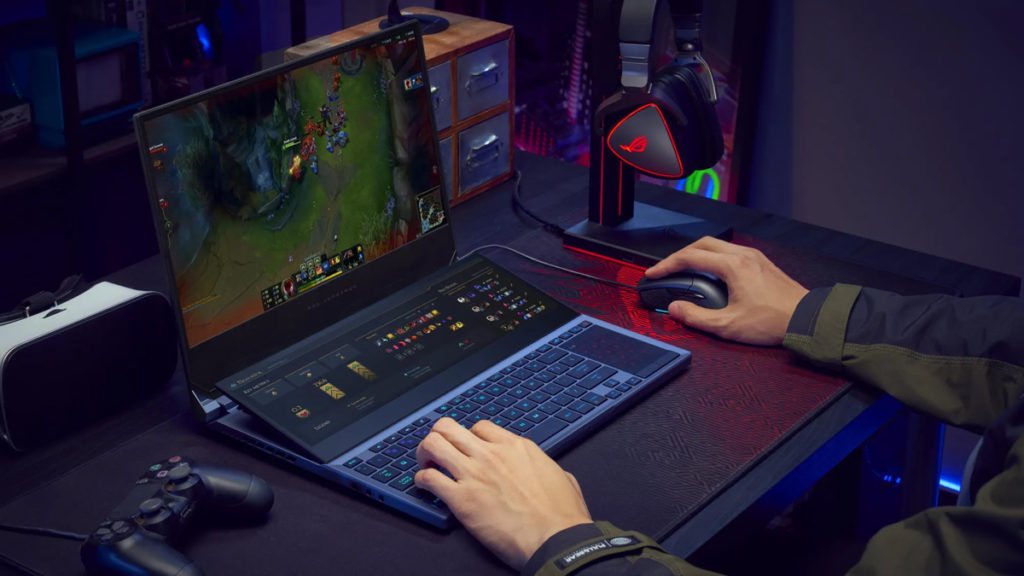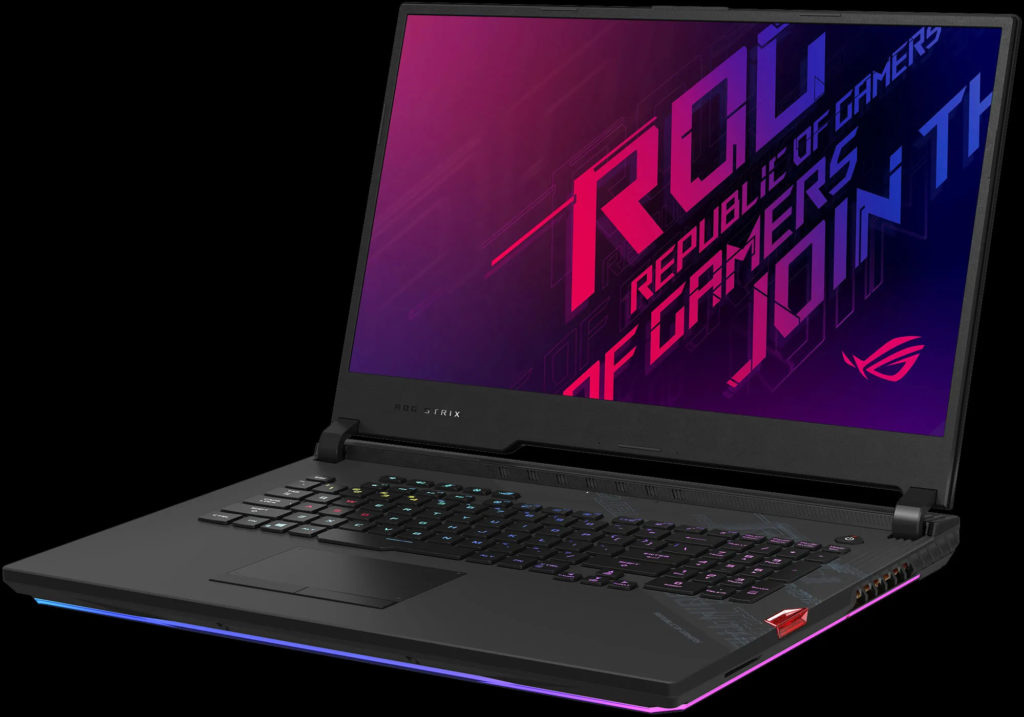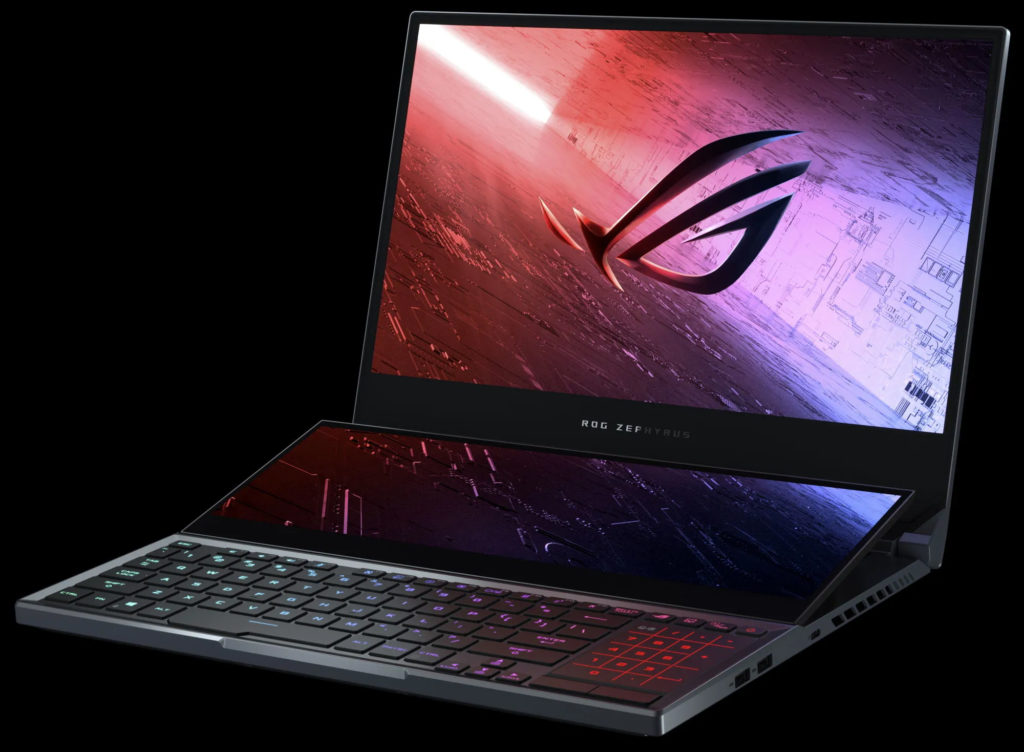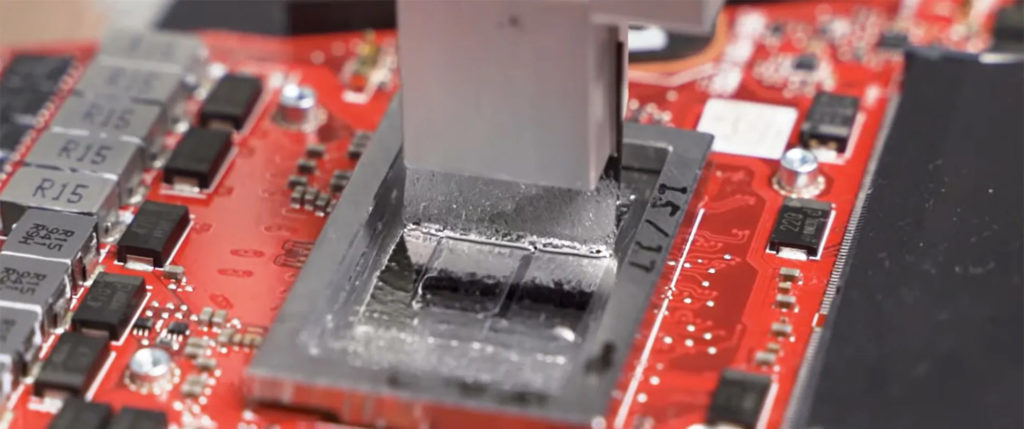
ASUS has introduced a handful of new ROG-branded laptops as part of today’s mobile GeForce RTX SUPER/Max-Q 2.0 launch, and two of them sport particularly novel features. For starters, the ROG Strix Scar 17 flaunts an incredibly fast display that refreshes at 300 Hz.

The flagship ROG Strix SCAR 17 represents the pinnacle of professional esports. Its blisteringly fast 300Hz gaming panel surpasses the current tournament standard, while its larger chassis and cooling module can run the new GeForce RTX™ 2080 SUPER GPU at a full 150W. This config pumps out enough frames to saturate the expansive 17.3” display with the sublimely smooth gameplay required for competitive play.
Next up is the ROG Zephyrus Duo 15, an ultra-slim laptop that comes with not one, but two screens. The secondary display is essentially a large touchscreen that can be used to perform actions in certain applications, such as music players, with the swipe of a finger.

At 14.1”, this is the largest second display ever put in a production gaming laptop. The IPS panel stretches wide viewing angles across the full width of the body. Its 3840 x 1100 resolution boasts a high pixel density that delivers rich details, crisp text, and flowing lines at a smooth 60Hz refresh rate. Having more screen space enhances a wide range of scenarios. You can use the second screen to turn your primary display into a more immersive canvas for just about everything.
ASUS also revealed that its entire Intel 10th Gen lineup would feature liquid metal instead of traditional TIM for better cooling. This material is rarely used because it requires manual application, but apparently, ASUS has figured out how to integrate it into the automated manufacturing process.

The impressive thermal conductivity of liquid metal has long been understood among desktop DIYers seeking the best performance, but until recently, it had to be hand-applied to chips in an expensive and time-consuming process. Its ability to conduct heat away from the CPU remained so attractive that our engineers spent over a year developing a patented process for automating its application during assembly. We use the additional margin provided by the improved heat transfer between the CPU and heatsink to reduce fan noise, lower CPU operating temperatures, or increase performance by up to 10%.
